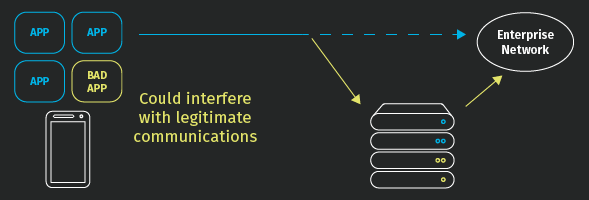Data Breach
Data security is crucial for success in the 21st century. People entrust businesses with their vital information. This includes not only personal information and other vital statistics but also bank account and credit card information. Technology, vigilance, and skill all combine to provide the data security each company needs.
The Cost of a Data Security Breach
Aside from the actual lost data, the costs of a security breach can be very disruptive to businesses. We know from our State of Software Security report that 76 percent of applications have a flaw on first scan and 24 percent are high severity, giving threat actors a wide and risky attack surface. And they’re taking notice: according to IBM, the average total cost of a data breach is $3.86 million, while the average time to identify and contain a breach is 280 days.
With this opportunity, not only can attackers cost an organization money in remediation damages, but also it may tarnish a business’s reputation if a breach hits the news. This can, ultimately, lead to lost customers and lost business opportunities down the road.
CISO Kit for Application Development
What is a Data Breach? How Does it Happen?
Data breaches don’t need attackers waiting at the gate, so to speak. In fact, about a quarter of all data breaches happen by accident and people using unsecure means of communication can let something slip. For example, someone might mention something sensitive while speaking out loud, thinking they’re in a secure area when they’re not. Or, an employee could accidentally lose track of a phone, USB drive, or laptop with sensitive files. These people are called benevolent insiders.
Of course, targeted attacks from outside a company still happen, as do attacks from the inside involving what are called malicious insiders. These people either infiltrate the company from the beginning, or they become malicious for one reason or another. Often, they just want money and will do anything to get it.

Sometimes, the data breach doesn’t even involve direct action from human beings. Programs themselves could malfunction or be poorly designed when it comes to security. Apps are notorious for this. Even the hardware can go haywire and cause security issues.
Check out our annual State of Software Security report for more on common types of breaches and best practices for addressing such problems.
Guarding Against a Data Breach
Threat actors know well that the way to get to your sensitive data is through applications, but there are steps that organizations can take to help safeguard their data and their customers against a breach. First, it’s important to prevent data exfiltration, or deliberate dissemination of sensitive information from a third party. This is often done through common data transmission methods.
Additionally, you should rely on code scanning tools that can help you identify flaws faster and prioritize remediation efforts, as well as train both security and development teams on secure coding best practices so that everyone is on the same page. This will help you proactively protect the information and lay a foundation for an application security policy that the entire organization can adopt.
Developer education is another important aspect of strong application security. Consider implementing a developer enablement program that includes hands-on and interactive lessons. A tool like Veracode Security Labs, which trains developers in the languages they use most, is more effective than mundane how-to videos and can help developers build muscle memory so that they write more secure code at the start of their next project.
Questions About Application Security?
Data Breach Prevention
Code scanning tools, as mentioned above, help you secure your applications to keep threat actors out and prevent damaging data breaches. When used in the right parts of your software development lifecycle (SDLC), these tools can help you protect intellectual property, corporate data, and customer data too.
Integrating a full solution like Veracode Application Analysis into your SDLC covers the bases in discovery, enablement, and AppSec governance. This suite of solutions includes Static Analysis (SAST), Dynamic Analysis (DAST), Software Composition Analysis (SCA), and manual penetration testing in one centralized view. This enables organizations to overcome challenges with DevSecOps by automating security wherever possible. It’s a scalable SaaS platform that can grow and change as your organization’s business needs change as well, which means you’re ready to pivot and prevent new data breach attempts in the future.
We take the protection of your data seriously. Here at Veracode, we have industry-leading software that gives us the power to find weak spots in your armor. Then, we’ll plug those leaks and give you the peace of mind you deserve.
Contact us at Veracode today to see other ways that we can help you with application security.